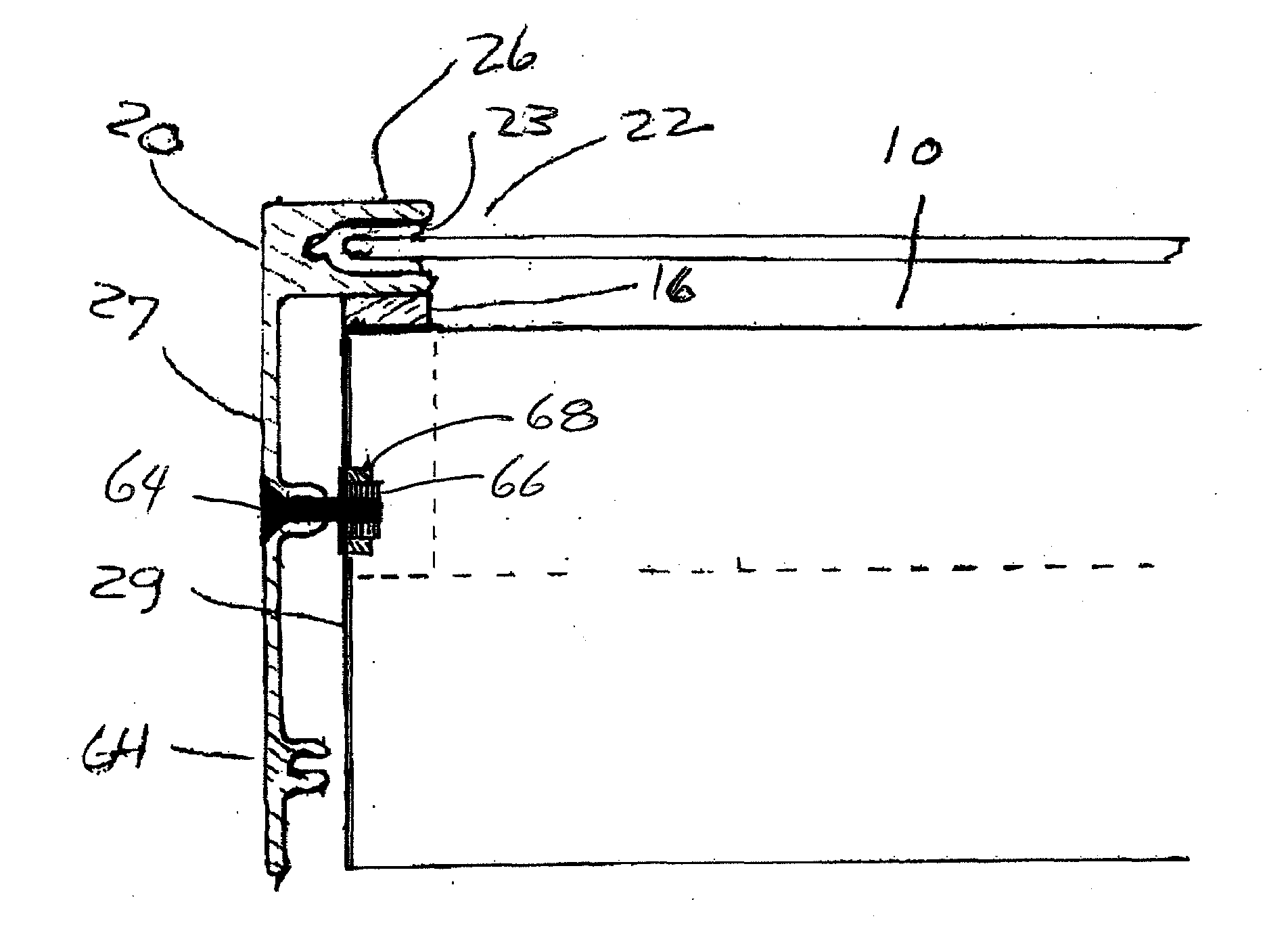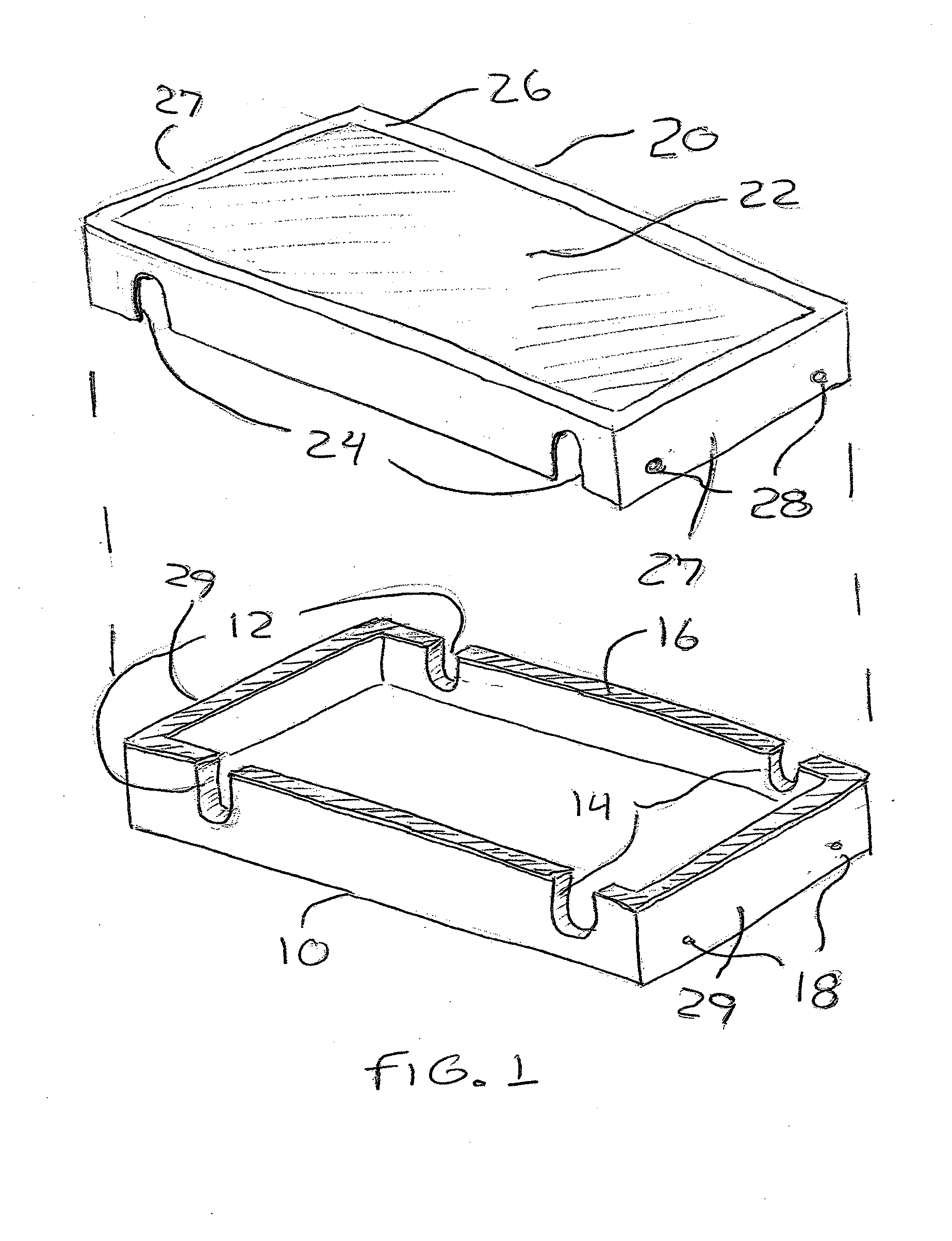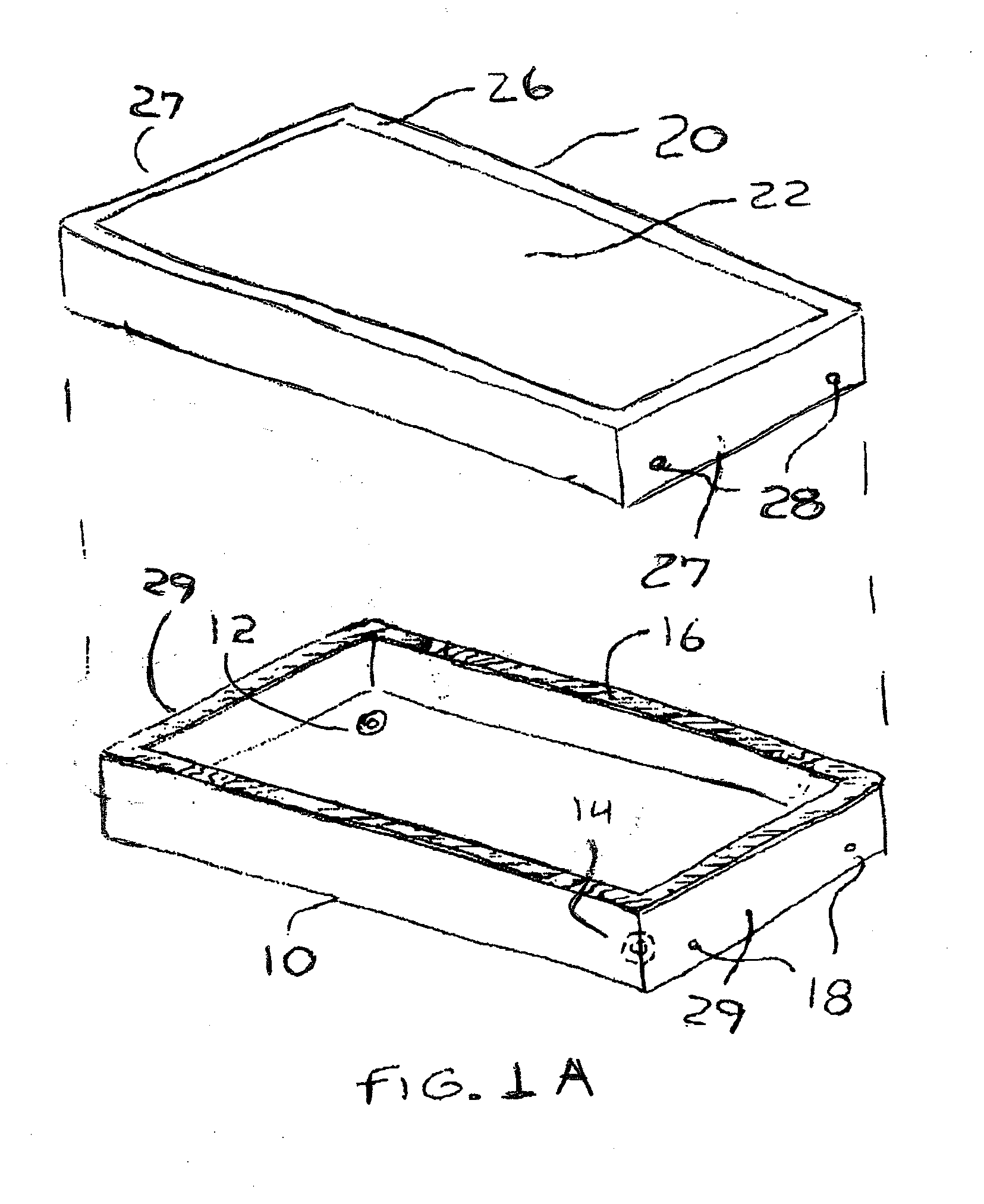Flashable rooftop solar collector enclosure
a solar collector and solar energy technology, applied in the field of solar collector enclosures, can solve the problems of not much recent development in residential solar collector design, limited availability of cost-effective technology, and inability to meet the needs of residential and commercial use, and achieve the effect of convenient opening and optimal performance of the enclosed collector
- Summary
- Abstract
- Description
- Claims
- Application Information
AI Technical Summary
Benefits of technology
Problems solved by technology
Method used
Image
Examples
Embodiment Construction
[0035]Solar collectors for heating systems typically use an energy transfer medium of gas, fluid or electricity, and may use a combination of mediums. The embodiments described below are generally presented in the context of fluid medium solar collectors but are applicable to collectors using other energy transfer mediums as well to solar power system employing photovoltaic cells and arrays. Please note, for purposes of the description that follows, the term “solar collector” extends, where the context admits, to some embodiments of the solar collector “enclosure” of the invention, particularly in solar heating applications where the primary energy capture mechanism is the circulating of air through the enclosure as a plenum, or of air or liquid through an energy absorbing conduit within the enclosure, for solar warming of the air or liquid as part of a heating circuit extending to a heat exchanger or space intended to be heated.
[0036]Solar collection systems require means for routi...
PUM
 Login to View More
Login to View More Abstract
Description
Claims
Application Information
 Login to View More
Login to View More - R&D
- Intellectual Property
- Life Sciences
- Materials
- Tech Scout
- Unparalleled Data Quality
- Higher Quality Content
- 60% Fewer Hallucinations
Browse by: Latest US Patents, China's latest patents, Technical Efficacy Thesaurus, Application Domain, Technology Topic, Popular Technical Reports.
© 2025 PatSnap. All rights reserved.Legal|Privacy policy|Modern Slavery Act Transparency Statement|Sitemap|About US| Contact US: help@patsnap.com



